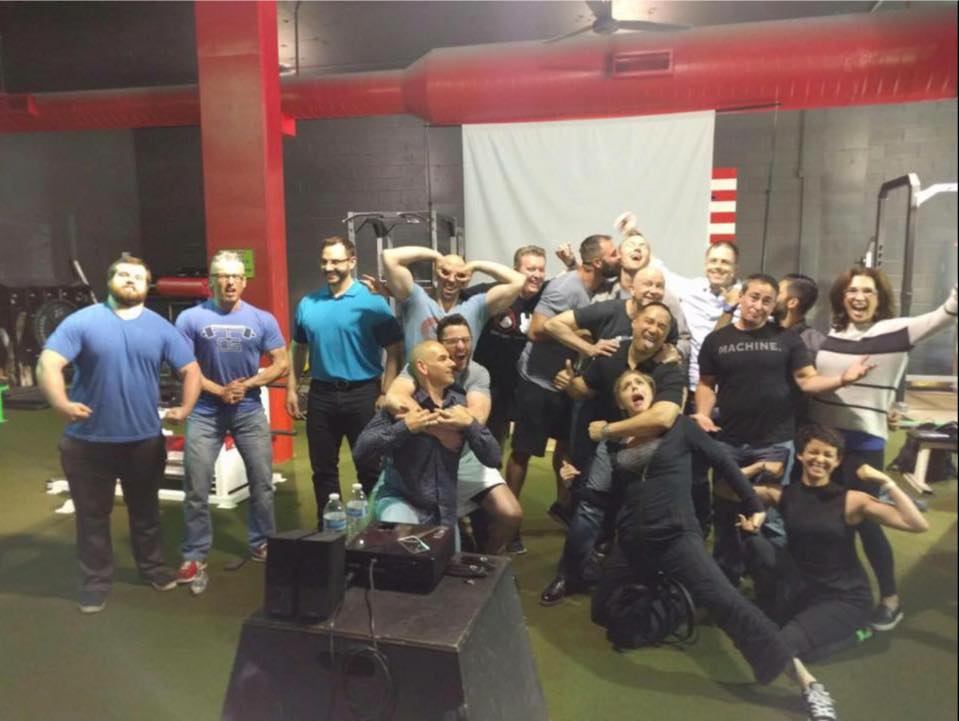The World’s Easiest Assessment and How to Instantly Tell If You Need More Mobility
This past weekend I was in Kansas City attending the Fitness Summit, an annual event featuring binge drinking and bad decisions some of the best fitness speakers in on the continent, and for some reason they keep asking me to come and talk sciency stuff.
During my talk all about assessments, I demo’ed on a concept I’ve been playing with in reductionistic application of assessments to get the most bang for your buck. There’s lots of resources out there that can help you learn about all of the intricacies of every movement, pattern, position and restriction throughout the body, but what does that mean when you put it into play, and how can you get maximum information without spending half a day working through redundant stuff that doesn’t tell you anything more than you really need to know.
In other words, how can you get the most info with the minimal amount of time and energy?
In terms of developing a program for someone, the biggest hurdle a lot of people get in trouble with is understanding whether someone has enough mobility to do a given exercise. It’s tough to prescribe an overhead press to someone who can’t actually get their arms over their head, likewise for a deadlift from the floor for someone who can’t flex their hips enough to grab the bar without secondary movement occurring.
Because of this, I wanted to figure out if someone has enough mobility to successfully capture about 90% of the stuff they would do in a gym setting, and if so, we could get to training and coach the hell out of the movements. If not, we know the individual will need to have some further testing to see if there’s a specific restriction or they just need to get moving again.
It also had to be something so incredibly simple that anyone could use it at a distance without technical proficiency in the movement, and without coaching on how to set it up. It also had to be something that requires zero equipment, as some people in certain parts of the world may not have access to specific devices or products.
So without further adieu, I give you the world’s easiest assessment:
Step 1: standing toe touch
If you can touch the floor, you have sufficient flexibility through your hips and spine to do pretty much all the basic exercises you would want to do in a gym setting.
Step 2: Shoulder flexion with biceps touching your ears
If you have the shoulder mobility to go overhead in this position, you have the mobility to do the majority of exercises you would do in a gym setting.
What it means
If either of these two movements are limited, it may mean you have to work on improving mobility before attacking some of the more complex positions in some exercises, like deadlifting from the floor, squatting to below parallel, overhead pressing, or getting a bar behind your neck.
Now of course this isn’t a comprehensive assessment of every joint and restriction that could prevent you from doing an exercise or a weight training program, but it hits on the two major joints of the body (hips and shoulder) that will likely be the main sticking points for most of the problems you would see in a movement capacity.
This is one of the first assessments I’ll use with elderly clients who don’t report a specific history of injury to either their hips, spine or shoulders just to check their overall mobility, and especially if their level of training wouldn’t warrant an assessment with a high level of motor control requirement or balance. We might get there, but this is a solid starting point.
Admittedly, there isn’t much research on this specific series and the implications on health or function, but it’s something I’ve observed to be fairly powerful. In many health settings, simple measurements can have profound effects on how a person is treated (BMI affecting medication doses, neck circumference affecting sleep apnea treatments, waist to hip ratio affecting obesity classifications, etc), so it shouldn’t be considered obtuse to think that these two metrics can help define a need for improving mobility or not requiring more (note the word “requiring” versus “could always use more”).
If you’re someone who lives in a remote location and doesn’t have access to a professional for a full assessment to determine whether a program could work well for you or not, this could be a simple low barrier of entry that could help you decide whether you need to spend some extra time working on mobility or whether you can just jump in with both feet. If you’re someone hesitant about starting a workout program because you don’t know where to start, this could be a simple metric to help understand what would be a benefit to you. If you’re a trainer who wants a simple daily assessment you could use with your clients that will give you information without taking any time at all, this could help.
If either of these movements cause or produce pain, it would warrant further investigation, but if there’s no specific history of injury to the area, they shouldn’t cause any problems at all, and can be done by all ages and ability levels with zero equipment or personal aptitudes.
Give this a try and let me know what you think.

3 Responses to The World’s Easiest Assessment and How to Instantly Tell If You Need More Mobility